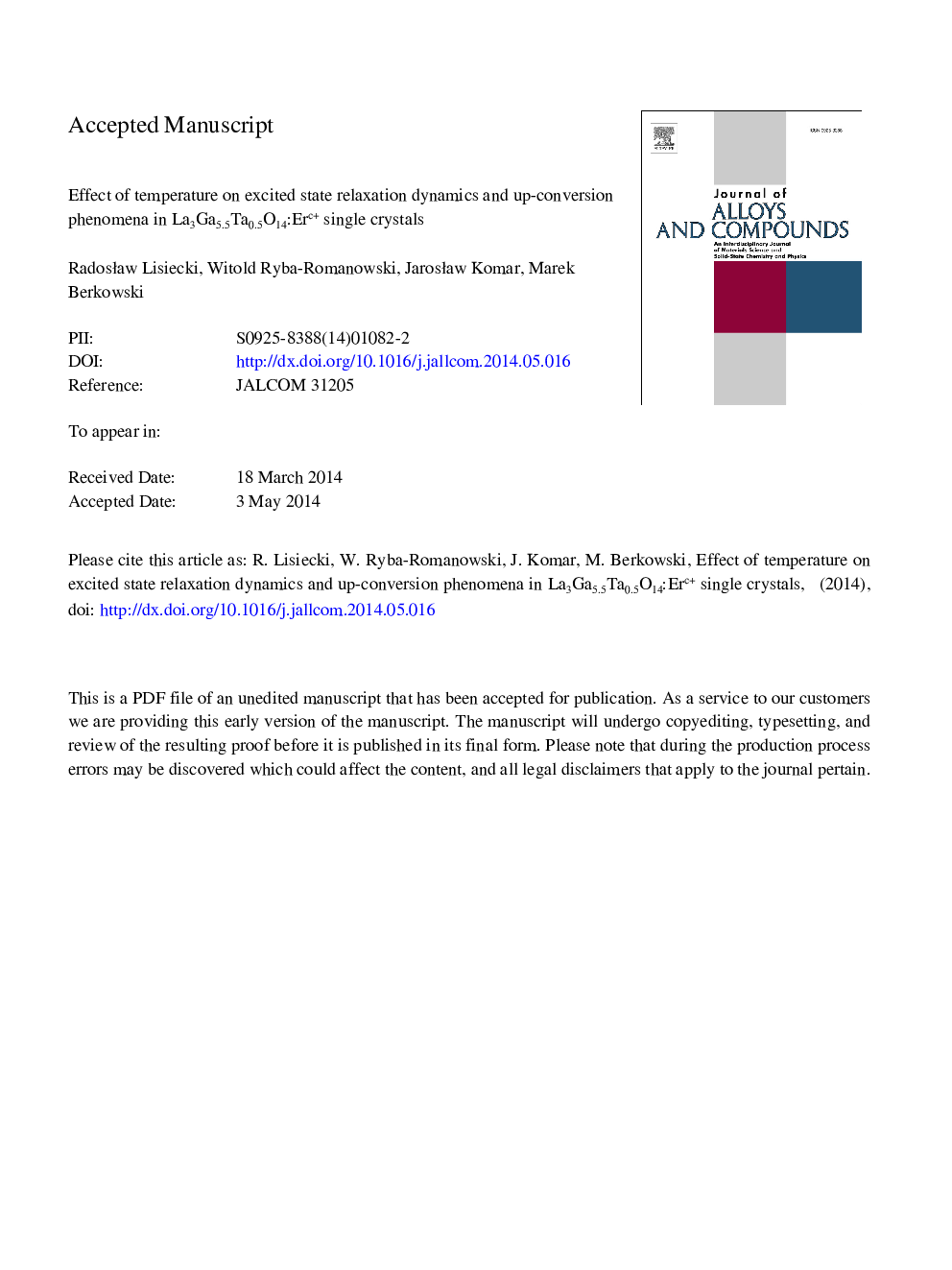| کد مقاله | کد نشریه | سال انتشار | مقاله انگلیسی | نسخه تمام متن |
|---|---|---|---|---|
| 8001882 | 1516283 | 2014 | 19 صفحه PDF | دانلود رایگان |
عنوان انگلیسی مقاله ISI
Effect of temperature on excited state relaxation dynamics and up-conversion phenomena in La3Ga5.5Ta0.5O14:Er3+ single crystals
دانلود مقاله + سفارش ترجمه
دانلود مقاله ISI انگلیسی
رایگان برای ایرانیان
موضوعات مرتبط
مهندسی و علوم پایه
مهندسی مواد
فلزات و آلیاژها
پیش نمایش صفحه اول مقاله

چکیده انگلیسی
The La3Ga5.5Ta0.5O14 (LGT) single crystals nominally doped with 5 at.% and 1 at.% of Er3+ were grown by the Czochralski method in an atmosphere of nitrogen containing small amount of oxygen. Examination of the grown crystals employing a coupled plasma emission spectroscopy (ICP ES) revealed that actual concentrations of Er3+ ions amount to 3.8 at.% and 0.27 at.%, respectively. Absorption and emission spectra as well as relaxation of excited states of Er3+ ions in the LGT host were investigated as a function of temperature in the 300-700 K temperature region. The main attention was focused on spectroscopic properties of the LGT:Er crystal that are relevant to a potential laser operation associated with the 4I13/2 â 4I15/2 transition of Er3+ near 1.6 μm and to up-conversion of infrared radiation into green luminescence originated in the 2H11/2, 4S3/2 levels. It was found that the increase of temperature affects weakly spectral features of inhomogeneously broadened absorption bands related to the 4I15/2 â 4I11/2 and 4I15/2 â 4I13/2 transitions. Observed decrease of the 4I11/2 lifetime is consistent with calculated dependence assuming the contribution of multiphonon relaxation process that involves emission of 5 phonons with energy of 660 cmâ1. Decrease of lifetime for the 2H11/2, 4S3/2 group of levels with increasing temperature, calculated assuming thermalization effects and the contribution of multiphonon relaxation, is slightly slower than experimental dependence, however. Integrated intensity of up-converted green emission excited at 980 nm diminishes quickly with increasing temperature and becomes hardly visible already at 670 K. It is supposed that this is due to simultaneous decrease of quantum efficiencies of both the intermediate 4I11/2 level and luminescent 2H11/2, 4S3/2 group of levels.
ناشر
Database: Elsevier - ScienceDirect (ساینس دایرکت)
Journal: Journal of Alloys and Compounds - Volume 610, 15 October 2014, Pages 451-455
Journal: Journal of Alloys and Compounds - Volume 610, 15 October 2014, Pages 451-455
نویسندگان
RadosÅaw Lisiecki, Witold Ryba-Romanowski, JarosÅaw Komar, Marek Berkowski,